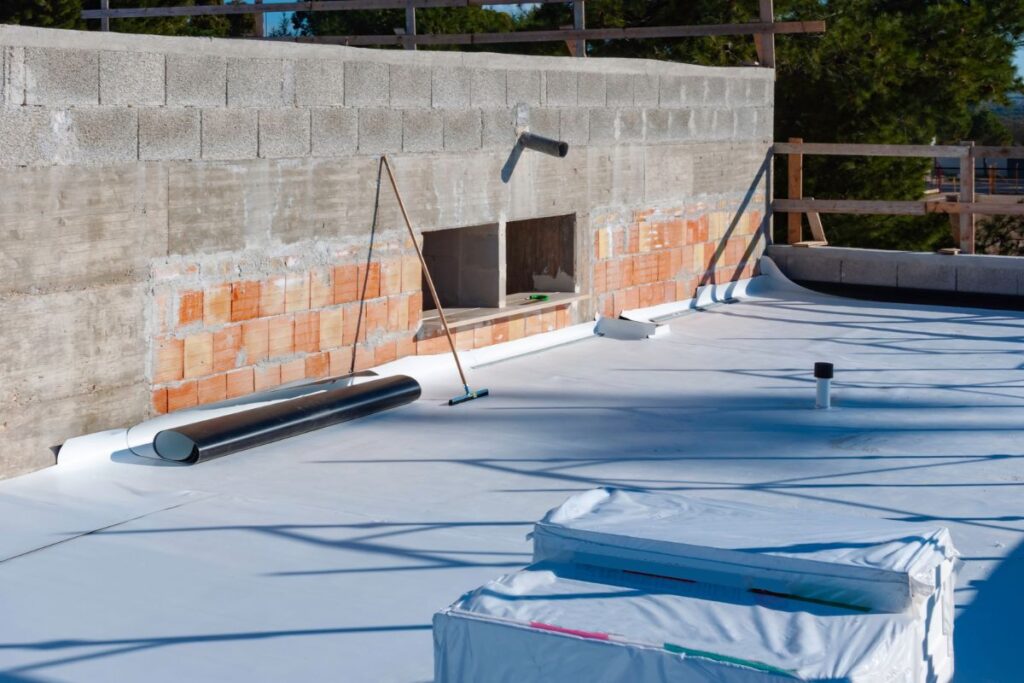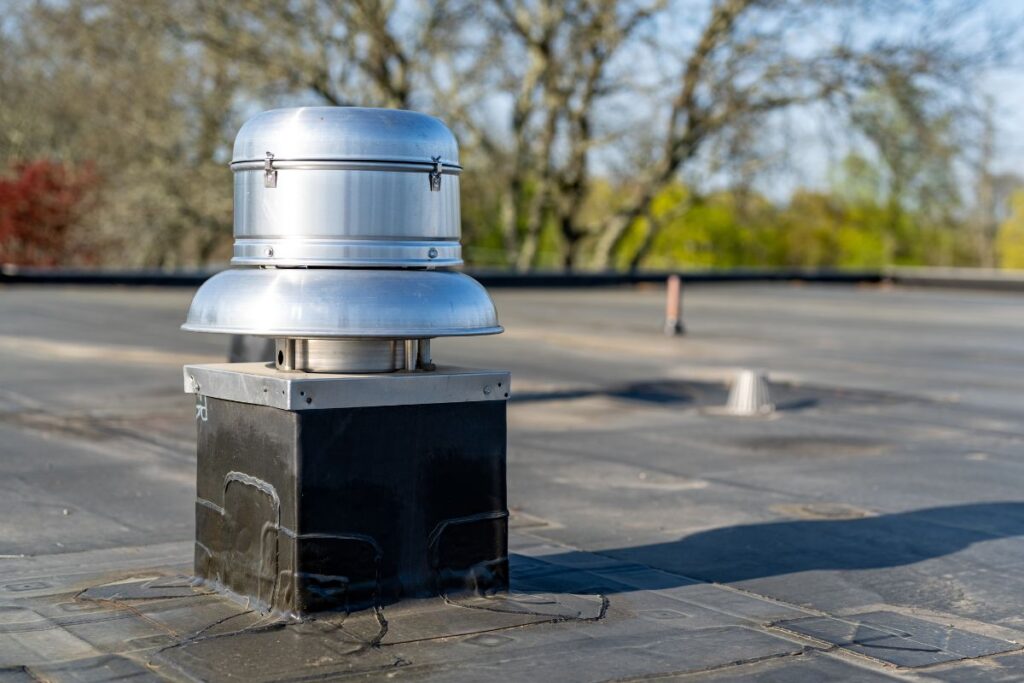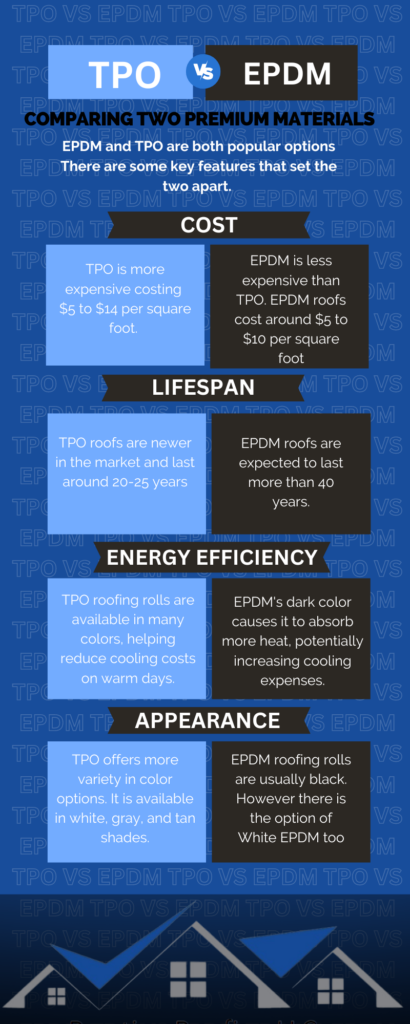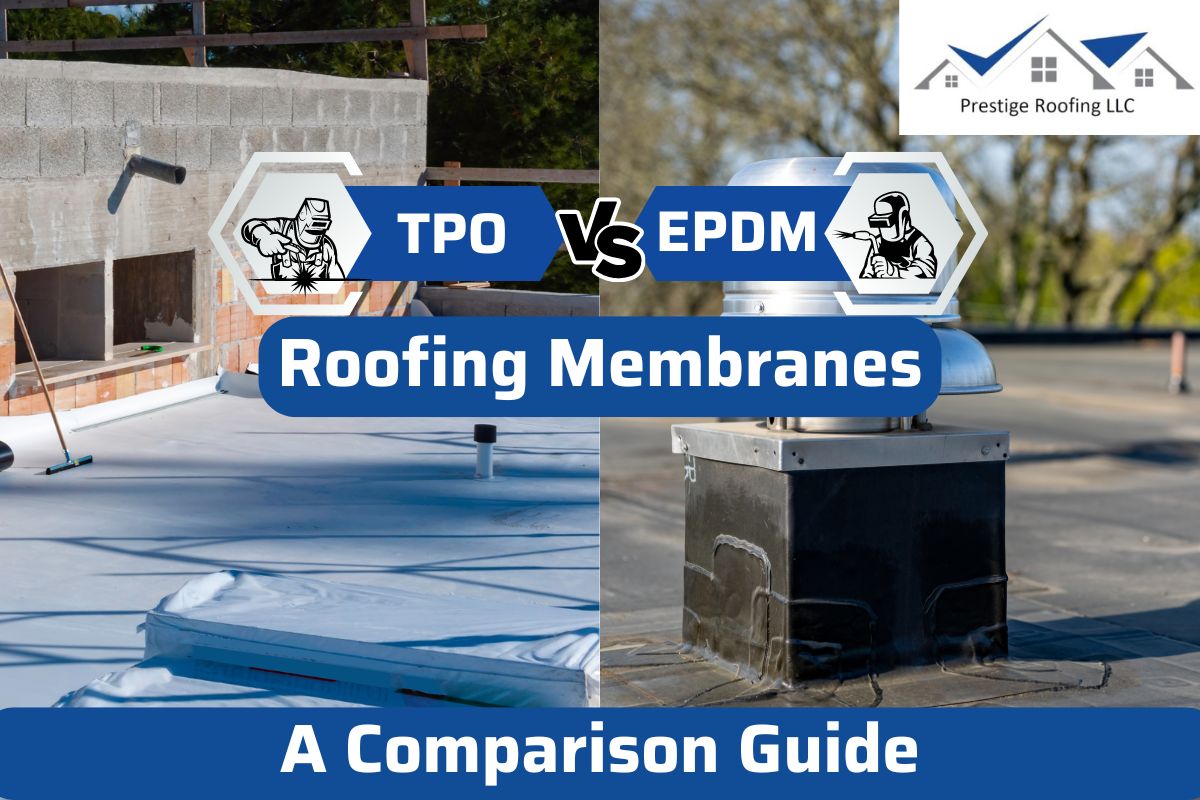If you are searching for the right material for your flat roof, two names will pop up frequently for you, no matter where you search: TPO and EPDM. Both these options are among the top flat roofing materials in the industry, but since you can’t install both of them on your roof, you’ll need to make a choice on which one is right for you and your needs.
We have received many questions from property owners regarding which materials they should choose. Today, we hope to make the choice between the two easier.
What Is A TPO Roofing System?

TPO, which stands for Thermoplastic Polyolefin, is a type of single-ply roofing membrane that is newer in the industry and has become increasingly popular over the years. It’s a synthetic material made from a mixture of polypropylene and ethylene-propylene rubber.
TPO was developed by several major chemical companies as a new type of roofing membrane that could compete with PVC roofing systems. In just a short time, TPO roofs have made a strong statement.
Read all about TPO roofing systems here.
What Is An EPDM Roofing System?

On the other side of the debate, we have another popular flat roofing material, EPDM. It stands for Ethylene Propylene Diene Monomer, which is the chemical component used to make this single-ply roofing system. This formula created a durable rubber material that provides excellent resistance to weathering and aging.
TPO vs. EPDM Roofing Systems: A Broader Comparison
Now that you have a brief overview of these two roofing systems, here is a more in-depth comparison when it comes to several parameters that will influence your decision.
Cost:
When it comes to cost, EPDM roofing systems typically have a lower upfront price tag compared to TPO. The materials used for EPDM rubber roofs tend to be less expensive, and the installation process is generally more straightforward, requiring less equipment such as torches.
TPO, on the other hand, is more expensive due to the higher cost to make it and the expertise and knowledge required for proper installation. For instance, the membrane’s seams need hot-air welding which takes specific expertise.
EPDM roofs cost around $5 to $10 per square foot, without the cost of labor. On the other hand, TPO roofs go around $5 to $14 per square foot.
However, it’s important to consider the long-term costs as well, as TPO’s energy-efficient properties can potentially offset the higher initial investment over time through reduced cooling costs.
While cost is very important in your decision, you should also take into account other factors that will play a vital role in making your decision.
Durability
Apart from the cost, one of the most important things you need to check is the durability of the roofing material. Both TPO and EPDM are quite durable and have some great characteristics.
For example, both of these single-ply membrane roofs are inherently fire-resistant materials, offering an added layer of safety to your property. They have a high ignition point, meaning they are less likely to catch fire, and both roofing materials are designed to withstand impact from hail, debris, and other external elements. Their flexibility allows them to absorb the force of impact without cracking.
However, when comparing the two, TPO roofs are slightly more durable than their EPDM counterparts. That’s because it shows excellent puncture resistance and fares better when it comes to tolerating foot traffic.
Lifespan
EPDM roofs last longer than TPO roofs, despite being a little less durable when it comes to punctures. Under normal conditions, you can expect your EPDM roof to last for more than 40 years, while TPO roofs have a life expectancy of about 20 to 30 years. However, you should know that the lifespan may be longer or shorter for each depending on the local weather patterns, and the quality of the installation the material had.
Energy Efficiency:
TPO roofing systems have a distinct advantage when it comes to energy efficiency due to its highly reflective properties. It’s widely available in a bright white color or other similar shades. The light-colored TPO membrane also reflects a significant portion of the sun’s heat, helping to reduce cooling costs in warm climates.
In contrast, EPDM’s dark color causes it to absorb more heat, potentially increasing cooling expenses. But there is an alternative, white EPDM. This is a newer version of the standard EPDM that has white pigment instead of carbon black.
Appearance
When it comes to flat or commercial roofs, appearance generally takes a back seat. However, if you are a building owner who wants options other than traditional black and white, then TPO is a better choice of the two.
When it comes to appearance, TPO offers more variety in color, ranging from white to gray and tan shades. This allows for better integration with a building’s overall design. EPDM, on the other hand, typically comes in a uniform black color, which some homeowners may find less visually appealing, especially for residential properties.
Maintenance
Both TPO and EPDM roofing systems require regular maintenance to ensure their longevity and performance. The amount of time you spend on maintenance and cleaning will depend on the weather conditions and the quality of your material.

Several manufacturers of TPO membranes and EPDM claim that their roofing materials are dust and water-resistant, however, you can still encounter these problems so ensure you have adequate drainage and utilize a roof coating if necessary.
Ease Of Installation
This factor is important to consider, especially when you are installing EPDM or TPO yourself. As a business owner, minimizing downtime and disruption to business operations is a priority. In this regard, EPDM roofing systems generally have an advantage over TPO.
With EPDM, the installation process is relatively straightforward. It involves laying out large sheets or rolls of synthetic rubber membrane and sealing them together with adhesives or tapes.
On the other hand, TPO installation can be a more involved process due to the need for specialized equipment like hot-air welding machines to create durable, watertight seams between the membrane sections. This not only requires more training and expertise from the installation crew, but can also potentially extend the duration of the project.
Also Read – TPO Vs PVC Roofing: Which Is Best For You?
Why Does Installation Matters?
Regardless of the type of membrane you choose, proper installation and maintenance will be crucial to ensuring the longevity and performance of your roofing system. It’s advisable to work with experienced and reputable roofing contractors in Wisconsin who specialize in the installation and maintenance of the roofing membrane you choose.
Regular flat roof inspections and cleanings are important for the well-being of these roofs, regardless if it’s a TPO or EPDM roofing system. Repairs are also essential in order to address any potential issues such as punctures, seam separations, or membrane shrinkage.
Proper maintenance practices, including cleaning and resealing as needed, will help extend the lifespan of your roofing membrane and protect your investment.
Get The Best Flat Roof Installation Services In Wisconsin!
As you can tell, both roofing materials are great options for a flat roof, but the ultimate decision will depend on your budget, your city, and, of course, your personal preference.
At Prestige Roofing our roofers are experienced at installing both EPDM and TPO roofs in De Pere, and the surrounding areas of Wisconsin. So whichever decision you make, we are the ones you can trust for a quality installation. However, if you still need some guidance on which flat roof material suits your needs, feel free to contact us at (920) 791-0414.

